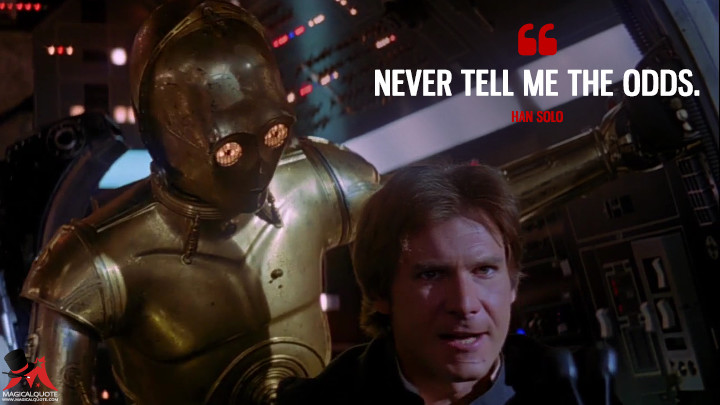
Last time, we changed our encounters by changing the level of the encounter. This time we’ll change the difficulty of encounters by adjusting the action economy with the encounter odds.
DM Rule of Thumb
All things equal in a combat encounter the side with more actions has a better chance of victory.
This is the Action Economy: the amount of actions that happen in one round of combat. A four member adventuring party has four actions per combat round. A mob of ten goblins has ten actions per combat. All things balanced the goblins have the advantage because of the action economy.

Fifth Edition’s action economy is a more significant factor with the system’s emphasis on flat math (bounded accuracy).
For a more in-depth description of the action economy read this article on Dungeon Solvers.
For a more in-depth description of Fifth Edition’s bounded accuracy read this article on Dungeon Master Assistance.
Keeping with the theme of the previous article we’ll use another 2d6 table. You can use the tables together to roll up different flavors for your combat encounters.
2d6 Encounter Odds
- 2 > Solo Monster*
- 3, 4 > Half Party Size
- 5 – 9 > Equal Party Size
- 10, 11 > 1.5 Party Size
- 12 > Double+ Party Size
*Use sparingly. Solo monsters have a severe disadvantage in the action economy. Different systems buff solo monsters with lair actions, legendary resistances/actions, traps/hazards, or minions. Another buff is providing the solo monster a significant environmental advantage (underwater combat).
We’ll take a closer look at environmental effects in the next segment so keep reading.
Encounter Odds Building Example
We have our table, let’s put it into action. Let’s consider a classic, four character adventuring party of level five. The baseline (you’ll remember from Part I) is a hard difficulty. This example adventure is set in a monstrosity-filled dungeon.
- Encounter 1: 1 Hydra
- Encounter 2: 2 Lamia
- Encounter 3: 4 Gricks
- Encounter 4: 2 Carrion Crawlers, 4 Harpies
- Encounter 5: 8 Harpies
You can quickly build these encounters using an online encounter builder like Kobold Fight Club and the necessary information.
Encounter Building Information
- Adventure Party Size
- Adventure Party Level
- Encounter Environment/Monster Theme (to narrow the options)
Combining Encounter Odds and Challenge Rating
These options don’t live in a vacuum. As DMs you’re encouraged to mix and match the tables to increase encounter diversity.
Let’s build five quick encounters by combining these numbers. Assume the same party and dungeon as the previous example.
2d6 Challenge Rating
- 9 (6+3) Equal Party Level
- 6 (2+4) Equal Party Level
- 9 (4+5) Equal Party Level
- 3 (2+1) -1 Party Level
- 5 (4+1) Equal Party Level
2d6 Encounter Odds
- 10 (5+5) 1.5 Party Size
- 7 (6+1) Equal Party Size
- 9 (5+4) Equal Party Size
- 5 (4+1) Equal Party Size
- 6 (3+3) Equal Party Size
- Encounter 1: 2 Carrion Crawlers, 4 Harpies (Equal Level, 1.5 Size)
- Encounter 2: 4 Gricks (Equal Level, Equal Size)
- Encounter 3: 4 Carrion Crawlers (Equal Level, Equal Size)
- Encounter 4: 4 Harpies (-1 Level, Equal Size)
- Encounter 5: 4 Ankhegs (Equal Level, Equal Size)
Wrap Up
Using the Challenge Rating and Encounter Odds tables we’ve diversified 40% of the planned encounters. As we add more considerations, the variety of encounters will increase. And diversity is the spice of life. In the next segment we’ll explore how environmental factors can affect combat encounters.

Pingback: Hit Points & Morale: Alternative Encounter Building V | Red Ragged Fiend
Pingback: Environment Design: Alternative Encounter Building III | RRF